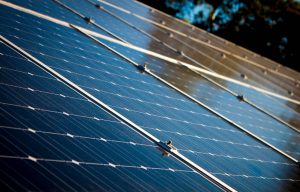
The future of jobs and the sustainability of our environment depends on renewable energy. Apart from Australia, other developing countries are switching to cleaner sources of energy. In the last three years, electricity prices have been more stable and lower in Norway than in Australia. This data shows the urgency that the Australian government needs before Aussies can depend on renewable energy fully.
Coal and hydropower are two big sources of electricity generation in Australia. This article focuses on some aspect of the energy industry, infrastructure, and assets.
Looking At the Renewable Energy per Capital Index
Factors like climate change and energy conservation have positive impacts on energy infrastructure. In the last quarter of 2019, Australia’s renewable energy growth rate per capita rate is ten times the world’s average. The government and private investors are planning to install about 16 gigawatts of renewable energy in 2020. It means that both wind and solar investments will increase 2019’s energy per capita consumption value from 220 watts.
When we compare Australia’s energy per capital with the United States of America, the latter is struggling to meet the baseline of the former. According to the 2018 data from the International Renewable Energy Agency (IREA), each American enjoys less than 50 watts of renewable energy. However, Germany is the next biggest after Australia. This European giant is an industrialised country with a renewable energy per capita average of 80 watts.
Tackling the Effects of Climate Change
The government and private investors are serious about tackling the effects of consuming fossil fuels. Since coal, crude oil and gas contain carbon; these fuels deplete the ozone layer and threaten our health. Switching to off-grid electricity, and renewable energy in Australia can reduce the country’s average surface temperature. Unlike in 2017 when renewable energy generation was at 2.2GW, it rose to 5.1 gigawatts in 2018.
A quick comparison with other countries shows there are over 8 million jobs in the renewable energy industry. As climate change remains a challenge, Australia will be committed to its responsibilities. More installations of solar and wind systems will help to reduce greenhouse gases from fossil-fuel electricity generation.

Meeting the Target By 2030
The future of renewable energy projects is threatened by high installation rates. In 2018, long-term contracts of renewables were below A$48 per MWh. This data shows there’s enough profit for service providers. However, the bulk of this profit margin will fund installations in wind and solar systems. Aussies are enjoying benefits from the abolishment of the carbon tax. The Government’s economic policy seeks to generate is to generate 50% of its total electricity from renewables by 2030.
Infrastructure in the Transmission of Renewables
Both the federal and governments have plans for Australia to be a renewable energy leader by the end of the next decade. Apart from generation, the transmission of electricity to rural areas remains a priority. Regions around the ocean with high wind speed will be suitable for wind farm installations. Also, critical infrastructure for the transmission of renewable energy is a big constraint. These governments need to boost investments that will transmit wind and solar power from respective farms to cities.
Access to More Sources of Renewable Energy
Access to a clean source of power generation is important. Apart from the cost-efficiency, businesses and residents need innovative technology for electricity. Unlike fossil fuels, solar, and wind installations don’t produce harmful particles of indoor smoke. Cases of lung cancer and other respiratory diseases are increasing annually. However, rapid investment in renewable energy infrastructure will improve the health of Australians. As Australia leads this industry, we hope other developing countries will reduce carbon emission.
Biogas as a Source of Energy
Contrary to the gas sourced from fossil fuels reserves deep underground, biogas is produced naturally as organic materials decompose in oxygen-free environments.
There’s no lack of feedstock — waste processing facilities, water treatment plants and agricultural chips are overrun with abundant waste products. Despite this, Australia’s biogas output today is the equal of just 0.5 per cent of our electricity generation.
Isn’t Biogas another polluting source of electricity?
Typically biogas is made up of 50-70 per cent methane, with 25-45 per cent carbon dioxide and small amounts of other gasses. A lot of these components can be found in higher quantities during a sewer blockage.
While it will release carbon dioxide when combusted, because the gasoline is produced from plant matter that sequesters carbon from the air during its growth cycle, it is sometimes a carbon-neutral supply of energy.
Methane is the key component. Already created by common processes within our daily own lives, the report indicates there’s an opportunity to do more to utilise it as a resource, rather than permit it to be released to the air.
Some of the common resources are landfills, sewage treatment plants and agricultural processes. Waste materials in sewers emit biogas which makes up a huge portion of the air composition inside the drains. This is why it is dangerous for drainage professionals to come in unmasked during the sewer repair process. If the biogas emitted from these processes was captured, it could be combusted to make heat to power a boiler or warm a house, or perhaps power a generator to generate electricity.